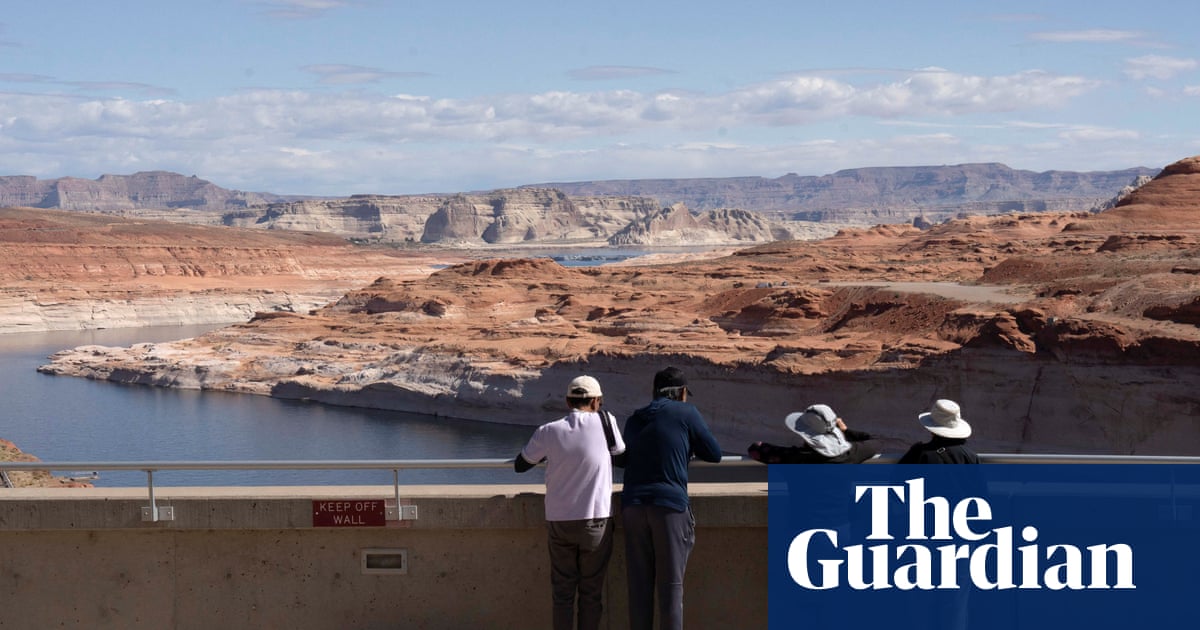TheColoradoRiver basin has lost 27.8m acre-feet of groundwater in the past 20 years, an amount of water nearly equivalent to the full capacity of Lake Mead, the largest reservoir in the United States, a new study has found.
The research findings, based on Nasa satellite imagery from across the south-west, highlight the scale of the ongoing water crisis in the region, as both groundwater and surface water are being severely depleted.
“Groundwater is disappearing 2.4 times faster than the surface water,” said Jay Famiglietti, a hydrologist atArizonaState University and the study’s senior author.
“Everyone in the US should be worried about it, because we grow a lot of food in the Colorado River basin, and that’s food that’s used all over the entire country,” he added. “These days, we’re also supporting a number of data centers and computer chip manufacturers, and these are essential to our economy.”
The Colorado River basin provides water to approximately 40 million people across seven US states, as well as to millions of acres of farmland. Most of the groundwater losses since 2003 occurred in the Lower Colorado River basin, including Arizona, Nevada and California, the study found.
The decreasing availability of surface water is easy to visualize across the west. There are the stark photographs of the dropping levels of water in Lake Powell and Lake Mead, and images of the Colorado River, whose flow has decreased approximately 20% in the past century.
But groundwater is different, Famiglietti said: “It’s invisible. It’s mysterious. The average citizen doesn’t really understand it.”
With less visibility has come less regulation: California only instituted statewide management of its groundwater in 2014, and before that, groundwater use waslargely unregulated. Arizona, which has seen big groundwater decreases, still does not regulate groundwater usage in the majority of the state, Famiglietti said, which means that most property-owners can simply pump out as much groundwater as they want.
“Overpumping” is the main cause of groundwater losses over the past 20 years, he said. “There’s nothing illegal about it, it’s just unprotected.”
Most water across the west is used for agriculture, and as “large-scale industrial farming” has expanded in the south-west, and particularly in Arizona, so have the resources for farmers to dig deeper and bigger wells to extract groundwater, Famiglietti said. In Arizona, many of the new farms grow alfalfa, which is used as hay to feed cows. Data centers, though a much smaller overall factor than agriculture, also are a growing business that require water.
The new study found that the depletion of water storage in the Colorado River basin has sped up in the past decade. Since 2015, the basin has been losing freshwater at a rate three times faster than in the decade before, driven mostly by groundwater depletion in Arizona.
While the researchers are advocating for better management of groundwater supplies in the future, Famiglietti also said that the efficacy of groundwater regulations so far was still unclear.
The effects of the climate crisis, including rising average temperatures and more frequent and severe droughts, are expected to make the region’s water shortages worse in the future.
